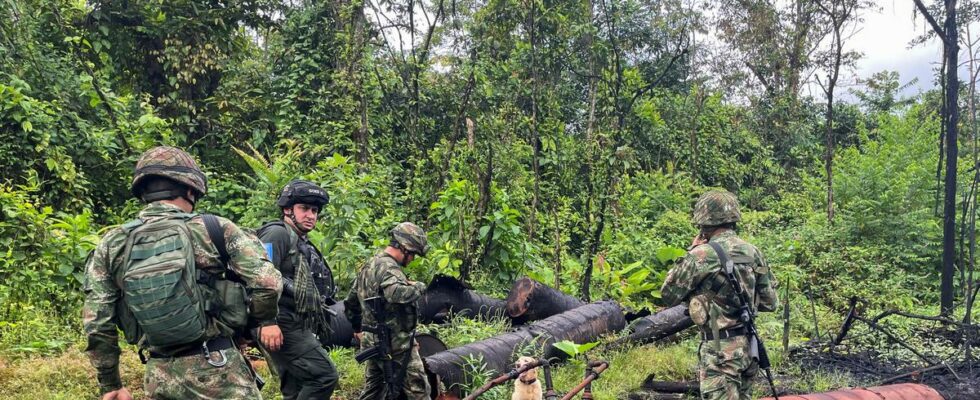The left-wing government resumed negotiations with the traffickers last November.
The Colombian government has reached a six-month ceasefire with the five main armed groups operating in the country – ELN guerrillas, FARC dissidents and drug trafficking gangs, President Gustavo Petro has announced. . “We have agreed to a bilateral ceasefire with the ELN, Segunda Marquetalia, the Central General Staff, the AGC (Gaitanista Self-Defense of Colombia) and the Sierra Nevada Self-Defense Forces, from January 1 to 30 June 2023, the extension of which will depend on the progress made in the negotiations,said the head of state in a tweet broadcast on New Year’s Eve.
The truce reached bilaterally was the main objective of the government as part of its initiative to “total peaceto end the conflict that persists despite the dissolution of the Revolutionary Armed Forces of Colombia (FARC) in 2017. Colombia, the world’s leading cocaine producer, has endured more than half a century of armed conflict between the state and various groups of left-wing guerrillas, right-wing paramilitaries and drug traffickers.
Read alsoIn Colombia, the ELN guerrillas declare a ceasefire
Colombia’s first left-wing government, which took office on August 7, in November resumed peace talks suspended by the former government of Iván Duque (2018-2022) in an attempt to end the continent’s last internal armed conflict. through negotiations. Negotiations are ongoing, without a bilateral ceasefire, with Cuba, Norway and Venezuela as guarantors. Mexico also plans to support the negotiations and is expected to host them on a date to be determined. However, these discussions have so far failed to stem the violence across the country.
Negotiations are taking place with the ELN (National Liberation Army), the last constituted guerrilla group still active in Colombia while the FARC signed a peace agreement in 2016. The ELN was founded in 1964 by trade unionists and sympathetic students of Ernesto “CheGuevara and the Cuban revolution. At the same time, “exploratory dialogues» are taking place between delegates from Gustavo Petro and the Segunda Marquetalia and Central Staff groups, dissidents of the FARC.
Read alsoDive into the cocaine factories, in the heart of the Colombian jungle
The Gaitanist Self-Defense militias of Colombia (AGC), made up of far-right paramilitaries demobilized in the early 2000s, are the armed wing of the Clan del Golfo (Gulf Clan), the main gang of Colombian drug traffickers. The government is proposingjudicially lenient treatmentto members of armed groups in exchange for their dismantling, recently explained to AFP Iván Cepeda, pro-government senator and negotiator with the rebels.
According to the NGO Indepaz (Instituto de Estudios para el Desarrollo y la Paz), nearly 90 political and/or criminal groups operate today in Colombia, with a total of 10,000 armed men. In 2022, Indepaz counted nearly a hundred massacres in which these groups were involved.
